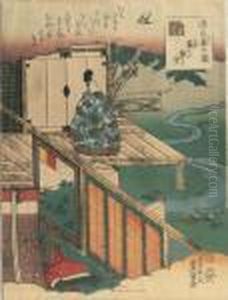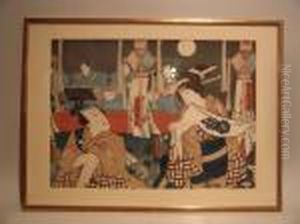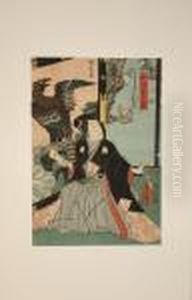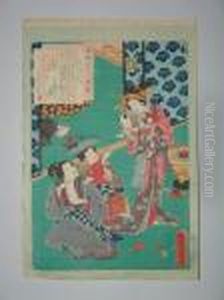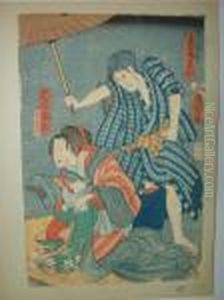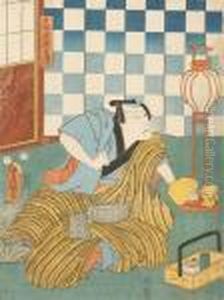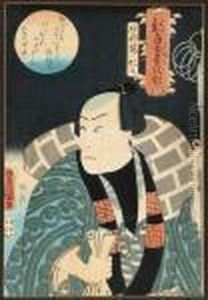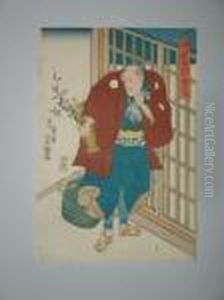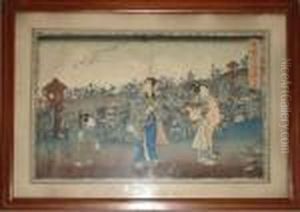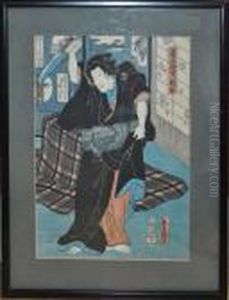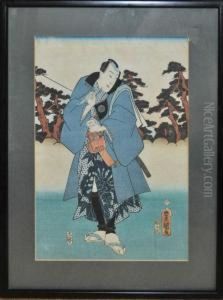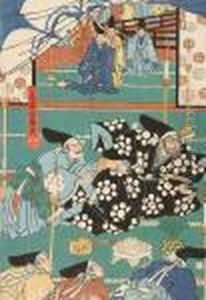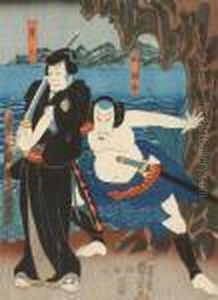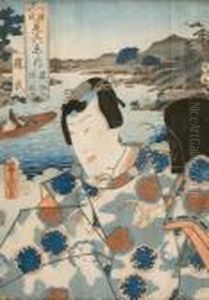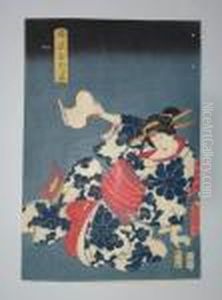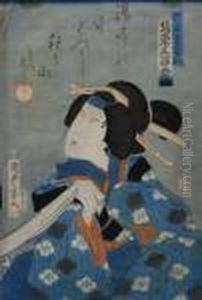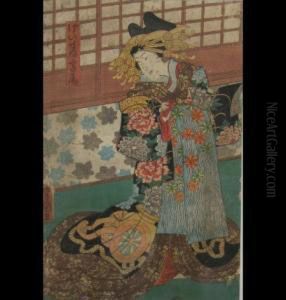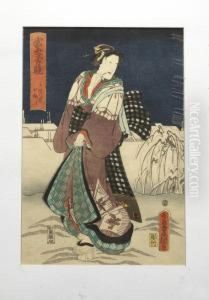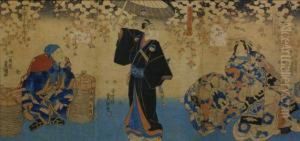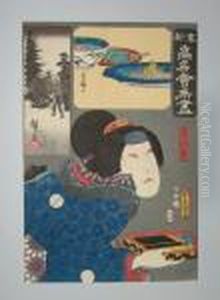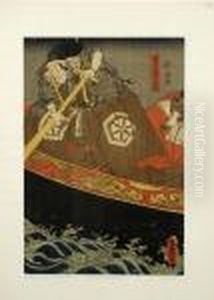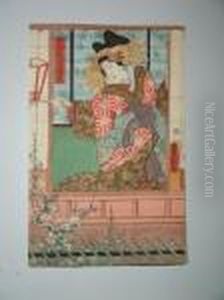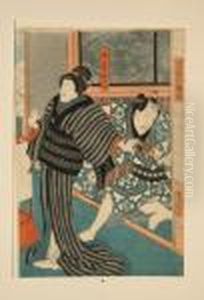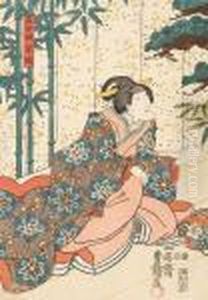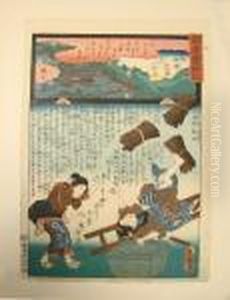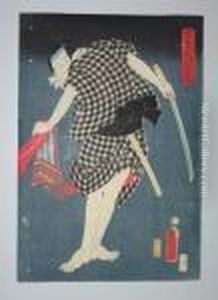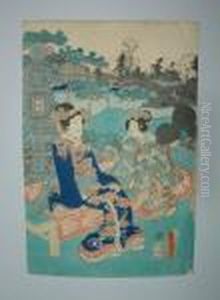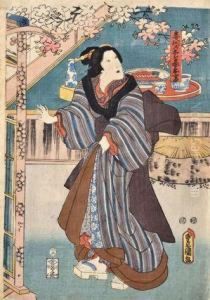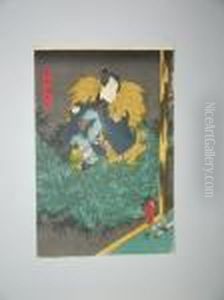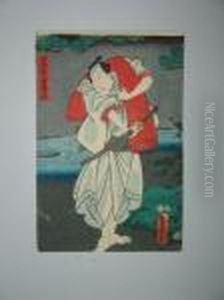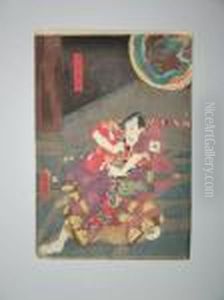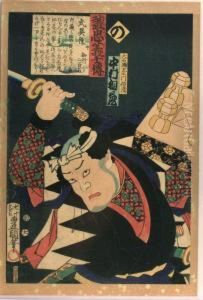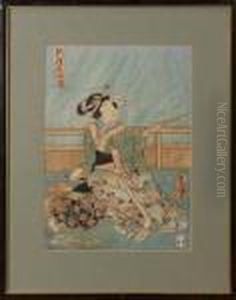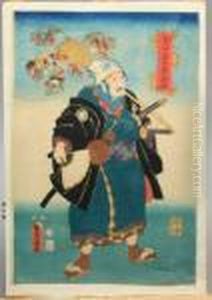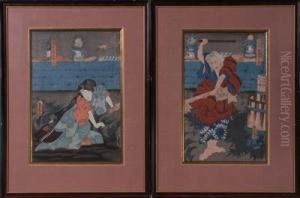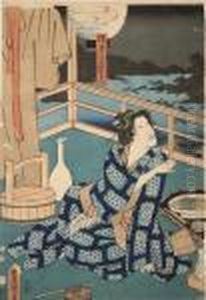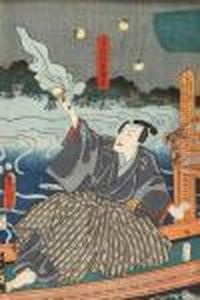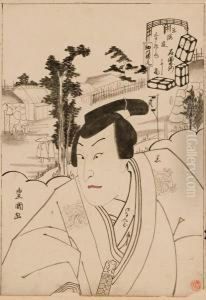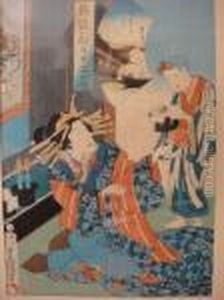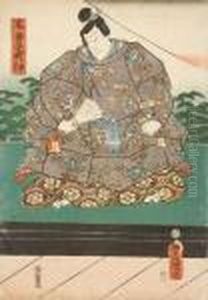Utagawa Toyokuni Iii Paintings
Utagawa Toyokuni III, also known as Kunisada, was a prolific and successful ukiyo-e artist of the 19th century, during the late Edo period in Japan. He was born in 1786 in Edo (present-day Tokyo) to a family with a background in ferry-boat operation. Showing a keen interest in art from an early age, Kunisada became a pupil of the renowned ukiyo-e master Utagawa Toyokuni I in around 1800.
Despite being a student of Toyokuni I, Kunisada surpassed his master's popularity and was considered the leader of the Utagawa school during his time. His early works included actor prints (yakusha-e) and portraits of beautiful women (bijin-ga), which were highly sought after. He became a master of the 'floating world' genre, capturing the hedonistic culture of Edo, including its kabuki theater, sumo wrestling, and pleasure districts.
Toyokuni III is particularly famous for his large multi-sheet compositions and for his innovation in the realm of oban tate-e format prints. His works often featured bold compositions, vibrant colors, and meticulous detailing, which made them immensely popular with the urban citizens of Edo. In 1825, upon the death of his master Toyokuni I, Kunisada declared himself Toyokuni II. However, this title was contested by another student, so he is now often referred to as Toyokuni III in art historical texts to avoid confusion.
Throughout his career, Kunisada collaborated with other artists and explored various subjects and styles, including landscape prints later in his life. His work continued to be in demand, and he created thousands of designs. Although his art was not as well received by later generations or internationally as some of his contemporaries like Hokusai or Hiroshige, recent scholarship has begun to recognize the importance of his work and his role in the development of the ukiyo-e tradition.
Kunisada outlived many of his contemporaries and continued to produce art until his death in 1865. His prolific output and the widespread distribution of his prints have made him one of the best-represented ukiyo-e artists in collections around the world. His legacy continued through his pupils who carried on the Utagawa school name into the Meiji period.
